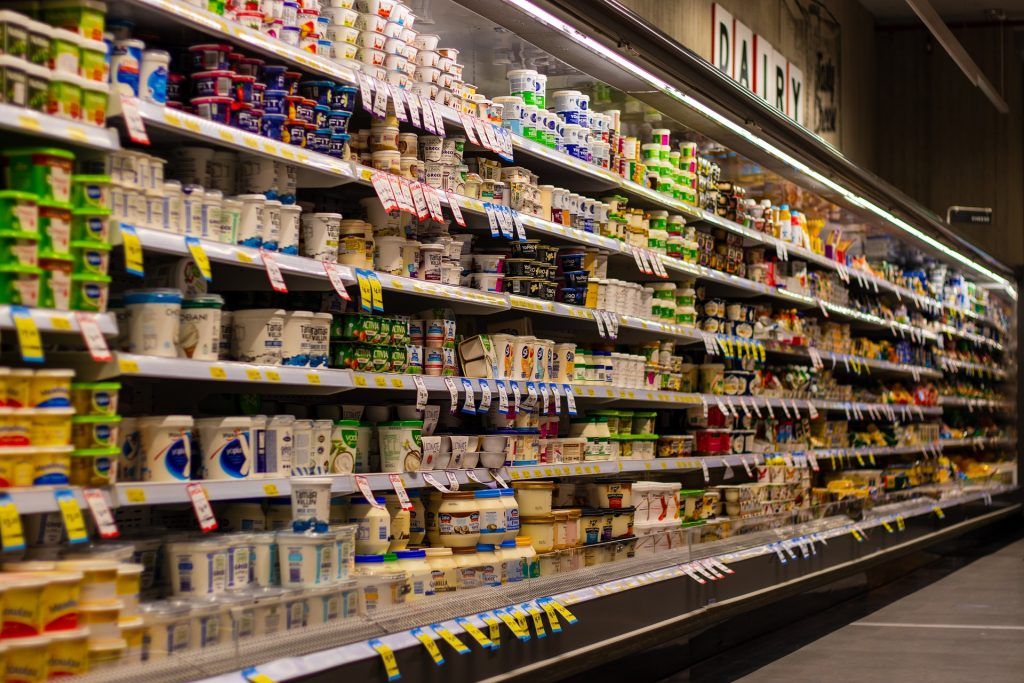The market started to shift significantly in 2018 where, for the first time, more consumers (54%) started their search on Amazon as opposed to Google (Jumpshot Report, 2018). This shift from the search engines (Google, Bing, Baidu) which were built for the key purposes of selling advertising space to retailers (Amazon, WalMart, Kelko, Alibaba, Boots) that were built to sell products.
This signals a significant shift in consumers behaviour (certainly in the UK) – they know what they want, where to find it, and they don’t have any fear of eCommerce; it is their friend.
It also signals a change in how advertisers support eCommerce. Once, they mainly advertised in the search domain, to drive people to the retailers (or their own e-store) to purchase. Increasingly, investment is moving to “in-e-store” activity.
The change in the retailers technology to focus on persistent carts, suggestion engines, and cross-promotional deals also requires new “in-e-store” marketing activity to break into consumer repertoires, and stay there.
As such this document will outline some of the key considerations that brands need to be aware of when creating an eCommerce strategy.
eCommerce Considerations
- Market Performance
- The global eCommerce market is anticipated to grow by +20.4% between 2018 and 2023. This is dominated by China (+31%) and the US (+20%), with Europe a little behind but still seeing growth for online grocery (up from 6% to 7.9%) in the next 5 years. (IGD Research, 2018).
- A data strategy
- There needs to be a commitment to harvest and action as much (useful) data on consumers, and users, as possible. It is clear that Amazon and other retailers will not give up their data on your consumers, so you need a clear strategy to build both your own data-sets, but also build your insight into how people shop your category on-line.
- Engaging in partnership with existing bricks and mortar retailers to work with them to boost their eCommerce performance is a sensible approach. In the US alone, the acquisition of Shipt by Target, Kroger’s purchase of Boxed and Walmart buying Jet.com all suggests that this will be a focus area for growth amongst “traditional” retailers.
- A technology strategy
- You will need to have the technology in place to be able serve your advertising and CRM at scale to individuals, meeting their requirements for personalised content. The advertising must be able to point to the right retailer and SKU, whether in a retailers site, or out of it.
- The technology solution will need to be able to collect, aggregate and harmonise data so that it can be leveraged across these delivery and measurement & analytics solutions
- An analytics solution
- You will need to have a clear set of KPI’s to be able to answer the following questions:
- Which channel to the consumer is offering the best return on investment? Why?
- What SKU’s are offering the best return on investment? Why?
- What advertising/promotion is offering the best return on investment? Why?
- What time is the best to advertise/promote? Why?
- What are competitors doing that we can learn from?
- You will need to have a clear set of KPI’s to be able to answer the following questions:
- A distribution and delivery solution
- The front end of the eCommerce must link to the supply chain, distribution and delivery backend. Benefits, Risks, Mitigations, Enablers and Dependencies must be planned for all ecommerce strategies.
- Fulfilment of orders will become a key battleground for Grocery eCommerce, with a focus on quality and speed across the supply chain through to the end consumer. In the US, companies are already developing technologies to process and pick orders in individual stores to provide hyper-local fulfilment for grocery orders.
- A new sort of advertising model
- The cost per unit of each piece of digital advertising needs to be defined and a new model built to deliver it, in order for the ROI to grow.
- Any media strategy, optimised for eCommerce, should include a proportion of spend through online customer-owned media. The proximity to purchase, and personalisation delivered through Martech solutions, must be combined with improved measurement and traceability from the media owner to ensure effective performance.
What happens next?
With the foundations in place work can begin on defining the actual eCommerce strategy. Without the basics in place a strategy cannot be derived, or maintained, or evolved.
- Strategy
- For FMCG brands, each brand must select one of the following strategies for growth, by looking at consumer U&A research alongside eCommerce data, and creating a detailed eCommerce persona, and customer journey:
- Penetration – is the fast way to grow, to get more people to try the product? Who is the target?
- FOP – frequency of purchase – is the best way to grow the brand to get people to buy it more often? Who is the target?
- WOP – weight of purchase – is the best way to grow the brand to get people to buy more of the product? Who is the target?
- FOC – frequency of consumption – is the best way to grow the brand getting consumers to use it more often, thereby requiring more frequent purchases? Who is the target?
- WOC – weight of consumption – is the best way to grow the brand getting consumers to use more of it, thereby requiring more frequent purchases. Who is the target?
- Once decided analysis can be done to ascertain:
- Best products/SKU’s (and any change to pack or design)
- Best channels
- Trading calendar and opportunities
- Best promotional tactic (pricing, bundles, cross-selling, partnerships etc)
- Best advertising route
- Compromises will have to be made to each brand’s strategy to accommodate a company-wide and category approach and the retailers “rules” and commercial contracts
- For FMCG brands, each brand must select one of the following strategies for growth, by looking at consumer U&A research alongside eCommerce data, and creating a detailed eCommerce persona, and customer journey:
- Tactics
- Alongside the strategy, the tactics for support must be developed, by channel:
- How does search work on the platform?
- What will the brand presence in store or on the shelf look like?
- What is the right image, text for search?
- What is the competition doing and how do we beat them?
- Is there an optimal timing/calendar for the channel, or a consumer trend that may impact it?
- Product offering; larger pack sizes, bundled offers etc. may need to be developed, tailored for the needs of the online shopper (and Retailer). New packaging technology to maintain quality through the supply chain or combination offers should be developed based on your insights into the shopper and the end-user.
- Alongside the strategy, the tactics for support must be developed, by channel:
- Skills
- Whilst the strategy is being formulated, a review of internal and external skills must be completed to upgrade skills as required in the following areas:
- Category eCommerce U&A (how do consumers shop for your category, on-line)
- Marketing Insights
- eCommerce ROI analytics
- eCommerce advertising and media
- Technology and data strategy and management
Flock is founded by world class global marketing leaders who design marketing transformation solutions; getting you better and more marketing for less money. We gain alignment, save time and money and create simpler, more effective marketing organisations and plans. If you’d like to know more about our work with leading brands, then please give us a call.




